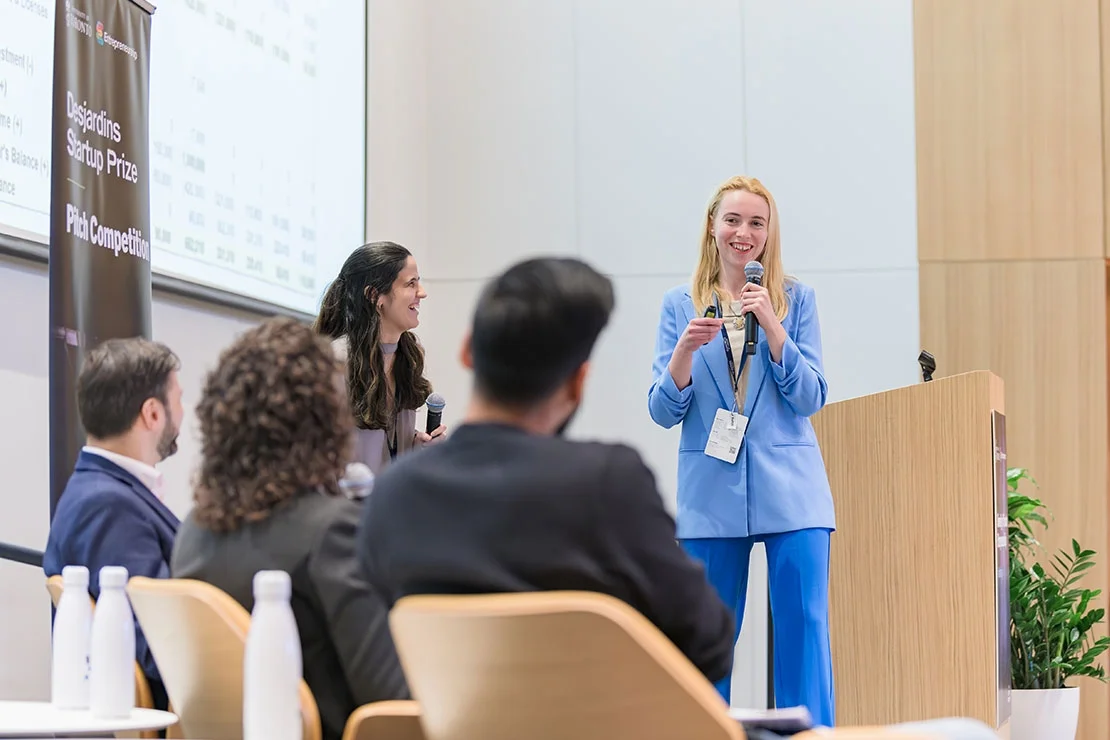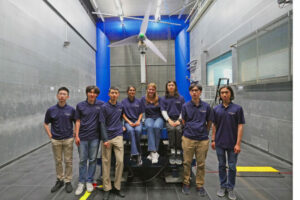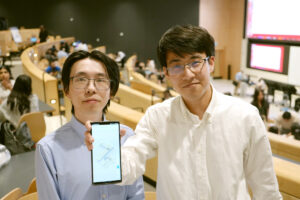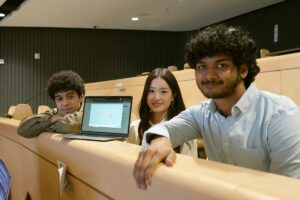
APRIL 30, 2024 • By Rahul Kalvapalle
It’s not a bullet point that appears on many resumés, let alone one belonging to a teenager: “Utilized quantum computing to discover a molecule that could revolutionize water treatment.”
But that’s exactly what Diana Virgovicova (Year 3 CompE) accomplished at age 17 when she modelled a molecule that can eliminate pollutants from water when exposed to sunlight.
Originally from Slovakia, Virgovicova later made her way to the University of Toronto to study computer engineering on a Lester B. Pearson International Scholarship and founded Xatoms, a startup using quantum computing and AI to discover water-purifying molecules in an effort to solve a long-standing global health problem.
“We want to be the leading water purification company in the world, offering affordable and efficient solutions and reaching some of the most vulnerable communities in the world,” says Virgovicova.
The young company is already making waves.
In March, Xatoms took home the top prizes for early-stage startups at the Desjardins Startup Prize and Pitch With a Twist competitions at U of T’s annual Entrepreneurship Week. A few days later, it was selected for the inaugural Compute for Climate Fellowship awarded by the International Research Centre on Artificial Intelligence, an organization backed by Amazon Web Services and UNESCO.
Virgovicova’s growing list of accolades also includes being selected for the NEXT 36 entrepreneurship program, the 776 Climate Fellowship, backed by Reddit co-founder Alexis Ohanian, and a Stockholm Junior Water Prize, which she received from Sweden’s Crown Princess Victoria.
She says she first recognized the urgency of the global water crisis when she was 14. She and her mother travelled to India, where she was confronted with a heavily polluted beach in Mumbai. “It really made me think about how we can solve this problem,” she says. “I decided to make cleaning polluted water my life’s mission.”
Upon returning home, Virgovicova contacted the University of Slovakia to enquire about water treatment research. A professor told her how quantum chemistry could be used to identify photocatalysts — materials that use sunlight to kickstart a chemical reaction that degrades pollutants.
Virgovicova says she began teaching herself to use quantum chemistry software and, within three years, used it to model a novel photocatalytic molecule.
How does it work? Most existing photocatalytic substances required ultraviolet (UV) radiation, but the structure that Virgovicova modelled works when exposed to simple visible light. “What I did was to remove this necessity of having an expensive UV reactor by modelling structures which would work when exposed to radiation from the sun,” she says.
The next step was to explore creating a company based around the discovery, which Virgovicova says influenced her decision to come to U of T. “I knew I wanted to build a company in the water space, so I chose U of T because it’s one of the best research-based universities in the world when it comes to entrepreneurship,” she says.
Xatoms, which was part of The Bridge accelerator program at U of T Scarborough, builds on Virgovicova’s photocatalyst discovery by incorporating AI to discover more — and more efficient — materials and molecules. “It’s now much more advanced and it’s not just about one material — it’s about multiple [materials] because different types of environments will need different types of materials to clean the water,” she says.
Xatoms now comprises a three-person team that includes co-founder and chief technology officer Kerem Topal Ismail Oglou (Year 3 CompE), and chief operations officer Shirley Zhong, a Western University student.
The goal is to create two product lines: an industrial water-treatment powder that can eliminate viruses, pesticides and bacteria, and a portable water filter for consumer use. To that end, the company is collaborating with Alexandra Tavasoli (ChemE 1T4, MSE PhD 2T1), an assistant professor of mechanical engineering at the University of British Columbia, to synthesize photocatalytic molecules in the lab — a process that Virgovicova estimates will take several months.
Xatoms is also pursuing partnerships with water treatment organizations in South Africa, Kenya, Nigeria and India, and working with foundations in the U.K. and the Netherlands.
Virgovicova says access to safe drinking water isn’t just a health issue but one of gender equality since women and girls often shoulder the burden of securing water for their households in many parts of the world.
“We want to see the number of people who lack access to clean drinking water to be reduced, and to see fewer women and girls investing their time — up to eight hours [a day] in some cases — to bring home a single container of water,” Virgovicova says.
“Our goal is to have a big impact and introduce more and more solutions to reach as many people as possible.”
“Virgovicova’s mission to address global inequities in clean water access has found traction with the skills she’s learned in ECE, which have a range of applications beyond the commercial,” says ECE Chair Professor Deepa Kundur. “The innovative work Diana’s doing at this early stage of her career is remarkable, and I expect she has many similar success stories ahead of her.”
Story from U of T Engineering News, with files from Matthew Tierney


